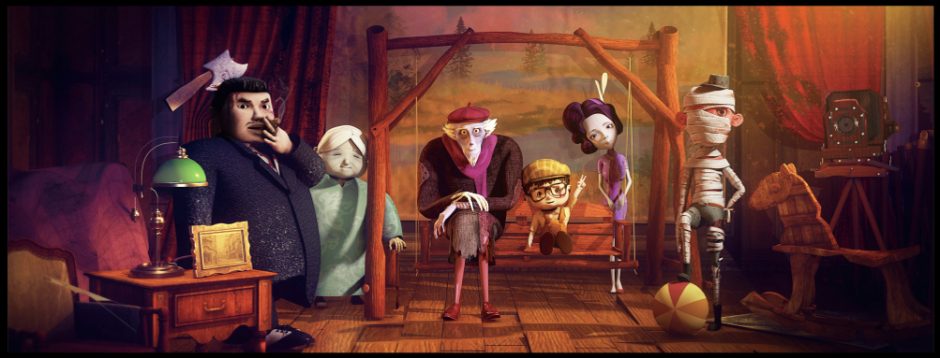1 . Some supplementary points for camera tracking (Leak filling)
1 . Create a point which may be blocked for some frames by the moving objects and polish it to make sure the stable tracking
step1 Start frame – Ctrl + left click
step 2 ctrl+< & ctrl+> means go to the former and next frame ( frame by frame)
step 3 Go to the frame when you want the point to be ended and click end point
step 4 Slide on the timeline to the frame where you want to start tracking the point again and add click + left click again on the same point so to add the key frame (pgup & pgdown to check the same position of the point) and then track the rest , then go the the frame ended and press E to open the point to create a splining (predict) between the two key frames (like spline animation)
2 . tracking the point which has large contrast and brightness
step1 trackingmode — marker
step2 Gauge Marker

3 . Modify the lens
make the deviation below 1



fix the camera



4 . Create new point group

first group for background and second group for the person
double click the second point group to create new points
II . Tracking the face
Step1 Outline the centre of the face (Middle)

change the color for easy seeing

Step2 Create points symmetrically along the edge of the hair

Step3 Import


Step4 Click the point (Alt+Drag) and go to the another window view and click Extract vertex / Extract Line / Extract Polygon and click corresponding vertex on the obj object (both in object group)
This step is accurate alignment point, so that the model can completely replace the face in the video, so it is necessary to track the points symmetrically and ensure accurate positioning along the hairline.

Step5 Calc
The value of the deviation in this step will be higher than one because of the angle mismatch.

Step6 Translate & Rotate (to match the face shape)

Step7 Project points and calc again


Step8 Select the background points and create mesh from point legacy



Step9 Run Warp4 ( for sourceimages)



Step10 Export to Maya and Nuke (for mel)


Step11 Import to Maya (set project)
Mel & Sourceimage
Mel for the object and camera
Sourceimage for the plane of the footage



Step12 Parent
Delete the original object and drag the new fbx model to the group which contains the locators so the new model will track the location of the locators.

TEST
Reflection and Summary
I have redone this project for three times. For the first time, I found that the points in the 3D view did not overlap with the points in the 2D view I tracked, which meant that my calculation was wrong. Maybe I moved the camera or activated the angle and length of the camera.
The second time I found that I mistakenly took the point of group 2 as the point of group 2 and gave the command of plane generation, which led to the error of my point and model and could not be withdrawn.
The last time, I summed up the lesson twice and checked my files at any time. In fact, tracking is a process that requires patience. It needs a little bit of correction to ensure that there is no significant deviation. This process also needs constant practice.
So I summed up a few points to pay attention to in the process of doing
- Save it at any time and save it as a new file. Do not cover it.
- See the name of the group clearly, and distinguish the group of objects and the group of lens.
- In the calculation, strictly follow the steps to adjust the tracking of points and the position of the box, instead of deleting points or constantly calculating to ensure that the curve is lower than 1.
- Tracking point is not only to track those easy to trace points, but to ensure that the tracking points cover all planes, that is, three dimensions of a three-dimensional space.
When we are familiar with a new software, there will be many problems and difficulties. In fact, if we have time, it is necessary to do it repeatedly. It can strengthen memory, discover new problems and then solve them. This process can also learn more.
